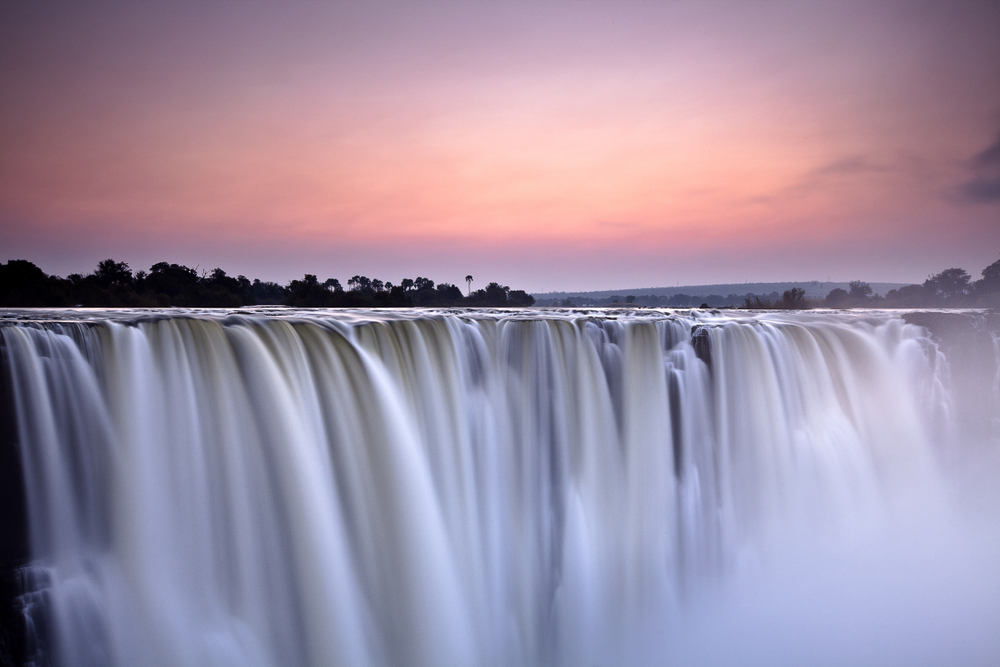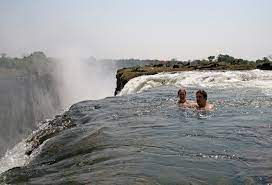Located on the border of Zambia and Zimbabwe in Africa, Victoria Falls is one of the world’s largest waterfalls and one of the seven wonders of the world.
This magnificent waterfall is located on the border of Zambia and Zimbabwe and has a rich history that spans thousands of years and has been shaped by the forces of nature and human intervention.
The earliest known inhabitants of the area around Victoria Falls were the San people, who were hunter-gatherers who lived in the region for thousands of years. The San people knew about the existence of the falls, but it was not until the arrival of European explorers in the 19th century that the world learned of the breathtaking beauty and sheer power of this natural wonder. Victoria Falls was discovered by Scottish missionary and explorer David Livingstone in 1855. He named the falls after Queen Victoria, who was the reigning monarch at the time. Livingstone was so impressed by the beauty of the falls that he wrote about them in his journal and sent photographs back to England. This sparked interest in the falls, and soon after, people from all over the world started making their way to the area to see this wonder of nature for themselves.
Victoria Falls was discovered by Scottish missionary and explorer David Livingstone in 1855. He named the falls after Queen Victoria, who was the reigning monarch at the time. Livingstone was so impressed by the beauty of the falls that he wrote about them in his journal and sent photographs back to England. This sparked interest in the falls, and soon after, people from all over the world started making their way to the area to see this wonder of nature for themselves.
In the late 19th century, the colonial powers of Britain and Rhodesia divided the region into two parts, with the falls and surrounding areas becoming part of Rhodesia (now Zimbabwe). In 1890, the Rhodesia Railway Company was formed, and work began on building a railway line that would connect Zimbabwe to the rest of Africa. This railway line was completed in 1897, and it made the falls much more accessible to visitors, who now could take a train directly to the falls.
The early 20th century saw the development of the Victoria Falls as a popular tourist destination. Hotels, lodges, and campsites were built, and a large number of visitors came to the area each year to admire the beauty of the falls and enjoy the many activities on offer, such as river cruises, fishing trips, and elephant-back safaris. The years following World War II saw a decline in the number of visitors to the falls. This was due to a number of factors, including the rise of air travel and the growth of other tourist destinations in Africa. However, the falls remained an important part of the region’s history, and efforts were made to protect and preserve this natural wonder for future generations.
The years following World War II saw a decline in the number of visitors to the falls. This was due to a number of factors, including the rise of air travel and the growth of other tourist destinations in Africa. However, the falls remained an important part of the region’s history, and efforts were made to protect and preserve this natural wonder for future generations.
In the late 20th century, the falls became part of the newly independent Zambia and Zimbabwe. Both countries were eager to promote the falls as a tourist destination, and they made many improvements to the infrastructure around the falls, including the building of new hotels, lodges, and campsites. This led to a resurgence of interest in the falls, and a new generation of visitors came to see this magnificent natural wonder.
Today, the Victoria Falls is one of the most popular tourist destinations in Africa, attracting hundreds of thousands of visitors each year. The falls are protected by two national parks, one in Zambia and one in Zimbabwe, and efforts are underway to conserve this.
With a width of 1,708 m (5,604 ft), Victoria Falls is also known as Mosi-oa-Tunya “The Smoke That Thunders” or Seongo or Chongwe, meaning “The Place of the Rainbow”, as a result of the constant spray.


